We use cookies to make your experience better.
To comply with the new e-Privacy directive, you agree to the privacy policy and our use of cookies.
Intel
Intel Xeon w3-2425 processor 3 GHz 15 MB Smart Cache
SKU
PK8071305129101
In Stock
PK8071305129101

Next Day (UK) Delivery offered on stock items
| Processor | |
|---|---|
| Processor base frequency | 3 GHz |
| Processor manufacturer | Intel |
| Processor codename | Sapphire Rapids |
| Processor cache | 15 MB |
| Processor ARK ID | 233485 |
| Processor model | w3-2425 |
| Processor threads | 12 |
| Processor operating modes | 64-bit |
| Processor boost frequency | 4.4 GHz |
| Stepping | S3 |
| Bus type | DMI4 |
| Processor family | Intel Xeon W |
| Processor cores | 6 |
| Box | No |
| Processor socket | LGA 4677 (Socket E) |
| Processor cache type | Smart Cache |
| Performance cores | 6 |
| Processor base power | 130 W |
| Maximum turbo power | 156 W |
| Memory | |
| Maximum internal memory supported by processor | 2 TB |
| Memory types supported by processor | DDR5-SDRAM |
| Memory channels | Quad-channel |
| ECC | Yes |
| Graphics | |
| Discrete graphics card | No |
| On-board graphics card model | Not available |
| On-board graphics card | No |
| Discrete graphics card model | Not available |
| Technical details | |
| Intel® Active Management Technology (Intel® AMT) | Yes |
| Intel® Turbo Boost Technology | 2.0 |
| Intel Trusted Execution Technology | Yes |
| Intel® Hyper Threading Technology (Intel® HT Technology) | Yes |
| Intel® AES New Instructions (Intel® AES-NI) | Yes |
| Execute Disable Bit | Yes |
| Enhanced Intel SpeedStep Technology | Yes |
| PCI Express slots version | 5.0 |
| Supported instruction sets | SSE4.1, AMX, SSE4.2, AVX 2.0, AVX-512 |
| Scalability | 1S |
| Intel VT-x with Extended Page Tables (EPT) | Yes |
| Embedded options available | No |
| CPU configuration (max) | 1 |
| Intel Virtualization Technology for Directed I/O (VT-d) | Yes |
| Intel 64 | Yes |
| Status | Launched |
| Market segment | Workstation |
| Launch date | Q1'23 |
| Intel Virtualization Technology (VT-x) | Yes |
| Processor cache type | Smart Cache |
| Memory speed (max) | 4400 MHz |
| AVX-512 Fused Multiply-Add (FMA) units | 2 |
| Package carrier | E1B |
| Features | |
| Maximum number of PCI Express lanes | 64 |
| Processor package size | 77.5 x 56.5 mm |
| Processor ARK ID | 233485 |
| Execute Disable Bit | Yes |
| PCI Express slots version | 5.0 |
| Supported instruction sets | SSE4.1, AMX, SSE4.2, AVX 2.0, AVX-512 |
| Scalability | 1S |
| Embedded options available | No |
| CPU configuration (max) | 1 |
| Market segment | Workstation |
| Harmonized System (HS) code | 8542310001 |
| Export Control Classification Number (ECCN) | 5A992C |
| Commodity Classification Automated Tracking System (CCATS) | G180729 |
| Use conditions | Workstation |
| Direct Media Interface (DMI) Revision | 4.0 |
| Processor special features | |
|---|---|
| Intel Software Guard Extensions (Intel SGX) | No |
| Intel Virtualization Technology for Directed I/O (VT-d) | Yes |
| Intel 64 | Yes |
| Intel Turbo Boost Max Technology 3.0 | Yes |
| Intel® Speed Shift Technology | Yes |
| Intel® OS Guard | Yes |
| Intel® Active Management Technology (Intel® AMT) | Yes |
| Intel® Turbo Boost Technology | 2.0 |
| Intel Trusted Execution Technology | Yes |
| Intel® Hyper Threading Technology (Intel® HT Technology) | Yes |
| Intel® AES New Instructions (Intel® AES-NI) | Yes |
| Enhanced Intel SpeedStep Technology | Yes |
| Intel VT-x with Extended Page Tables (EPT) | Yes |
| Intel Virtualization Technology (VT-x) | Yes |
| AVX-512 Fused Multiply-Add (FMA) units | 2 |
| Intel® Boot Guard | Yes |
| Intel® Optane™ DC Persistent Memory Supported | No |
| Intel® Deep Learning Boost (Intel® DL Boost) | Yes |
| Mode-based Execute Control (MBE) | Yes |
| Intel® Resource Director Technology (Intel® RDT) | No |
| Intel® vPro™ Platform Eligibility | Yes |
| Intel® Turbo Boost Technology 2.0 frequency | 4 GHz |
| Intel® Turbo Boost Max Technology 3.0 frequency | 4.4 GHz |
| Intel® Transactional Synchronization Extensions | Yes |
| Intel® Total Memory Encryption | Yes |
| Intel® Control-flow Enforcement Technology (CET) | Yes |
| Intel® Platform Firmware Resilience Support | Yes |
| Intel® Total Memory Encryption - Multi Key | No |
| Intel® Threat Detection Technology (TDT) | No |
| Intel® QuickAssist Software Acceleration | No |
| Intel vPro® Enterprise Platform Eligibility | Yes |
| Intel® One-Click Recovery | No |
| Intel® Virtualization Technology with Redirect Protection (VT-rp) | Yes |
| Intel® Remote Platform Erase (RPE) | No |
| Intel® QuickAssist Technology (QAT) | 0 default devices |
| Intel® Dynamic Load Balancer (DLB) | 0 default devices |
| Intel® Data Streaming Accelerator (DSA) | 1 default devices |
| Intel® In-memory Analytics Accelerator (IAA) | 0 default devices |
| Intel® Advanced Matrix Extensions (AMX) | Yes |
| Operational conditions | |
| Tcase | 64 °C |
| DTS Max | 83 °C |
| Logistics data | |
| Harmonized System (HS) code | 8542310001 |
| Weight & dimensions | |
| Processor package size | 77.5 x 56.5 mm |
| Other features | |
| Maximum internal memory | 2 TB |
| CPU configuration (max) | 1 |
You may also be interested in
| Product |
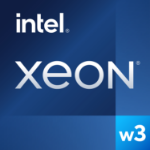 Intel Xeon w3-2425 processor 3 GHz 15...
Login for pricing
Intel Xeon w3-2425 processor 3 GHz 15...
Login for pricing
|
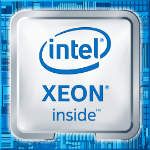
Popular
Intel Xeon W-2225 processor 4.1 GHz 8....
Login for pricing
|
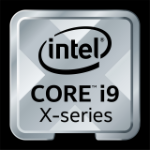 Intel Core i9-10900X processor 3.7 GHz...
Login for pricing
Intel Core i9-10900X processor 3.7 GHz...
Login for pricing
|
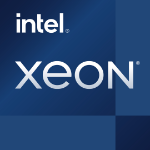
Recommended
Intel Xeon E-2386G processor 3.5 GHz 1...
Login for pricing
|
 Intel Xeon E-2388G processor 3.2 GHz 1...
Login for pricing
Intel Xeon E-2388G processor 3.2 GHz 1...
Login for pricing
|
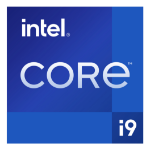
Bestseller
Intel Core i9-12900KS processor 30 MB...
Login for pricing
|
|---|---|---|---|---|---|---|
| SKU |
PK8071305129101
|
CD8069504394102
|
CD8069504382100
|
CM8070804494716
|
CM8070804494617
|
BX8071512900KS
|
| Manufacturer |
Intel
|
Intel
|
Intel
|
Intel
|
Intel
|
Intel
|
| Processor lithography |
N/A
|
up to 22nm
|
up to 22nm
|
up to 22nm
|
up to 22nm
|
N/A
|
| Processor family |
Intel Xeon W
|
Intel Xeon W
|
Intel Core i9 X-series
|
Intel Xeon E
|
Intel Xeon E
|
Intel Core i9
|
| Processor socket |
LGA 4677 (Socket E)
|
LGA 2066 (Socket R4)
|
LGA 2066 (Socket R4)
|
LGA 1200 (Socket H5)
|
LGA 1200 (Socket H5)
|
LGA 1700
|
| Processor cores |
6
|
4
|
10
|
6
|
8
|
16
|
| On-board graphics card |
N
|
N
|
N
|
Y
|
Y
|
Y
|
| Discrete graphics card |
N
|
N
|
N
|
N
|
N
|
N
|
| Cooler included |
N/A
|
N
|
N
|
N
|
N
|
N
|
| Package type |
Tray
|
Tray
|
Tray
|
Tray
|
Tray
|
Box
|

